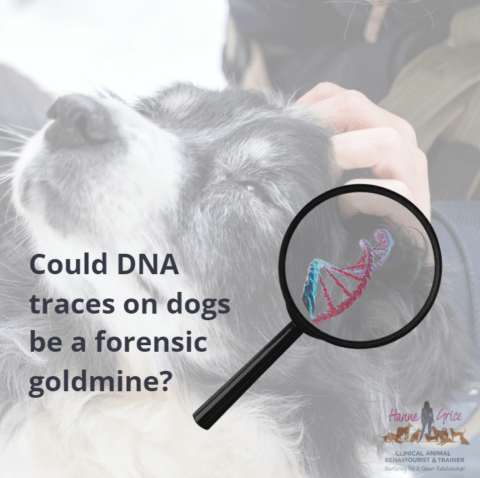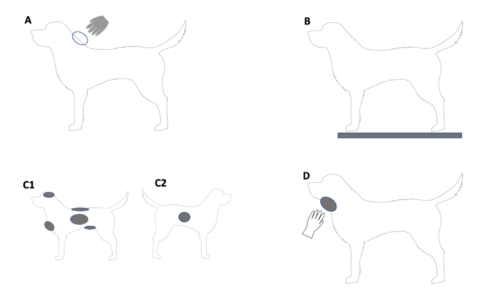
Whilst dogs have always been human’s best friend, new research suggests they might also be valuable allies in the world of forensic science. A pilot study conducted by Flinders University, in collaboration with other institutions, has delved into the potential of dogs as carriers of human DNA evidence. Because animals could be a victim of a crime, an offender, or innocent party associated with a crime, being able to analyse any human DNA they may be carrying, could potentially help criminal investigations, although this is an understudied area.
Overview of the study
The research conducted by Monkman et al. (2023) involved sampling 20 dogs from separate households. A researcher attended each house of each participant, and a total of nine DNA samples were taken directly from each of the participant’s dog around various areas of the dogs’ bodies. These included areas that a person might touch, such as the neck (after stroking) and areas the dog might come into contact with, like a sheet they walked over. The chest, top of the dogs’ heads, back, sides, and stomach areas were also sampled.
While DNA could be retrieved from all sampled areas on the dogs, some regions, notably the head and back, yielded more DNA than others. This variability suggests that certain areas might be more valuable for sampling in forensic contexts.

Interestingly, while DNA from dog owners and household members was expected, the study also identified DNA from unknown sources on some dogs. This finding underscores the idea that dogs can pick up and carry DNA from various environments and individuals.
So what are the practical applications of such research?
This pilot study indicates that if a dog is present at a crime scene, then professionals should consider the dog as a potential source of human DNA evidence. Sampling the dog might provide crucial leads, especially in cases where human witnesses might be absent or unreliable.
The study also sheds light on the dynamics of DNA transfer between humans and dogs. However, caution is to be had when it comes to interpreting DNA evidence, especially in scenarios where indirect DNA transfer via dogs might be a factor. Hence, the researchers emphasise the need for more studies on the transfer of human DNA to and from pets. Nevertheless, such research helps to enhance the understanding of DNA transfer mechanisms, and improve the accuracy and reliability of forensic investigations involving pets.
The case of Snowball
Whilst this study focused on dogs and how DNA can be transferred onto the animal’s body and then analysed, it is not the first time animals and DNA have been connected to forensics. History was made in 1994 when 32 year old Shirley Duguay from Canada, disappeared. A cat called Snowball, owned by Shirley’s ex-partner, played a pivotal role in solving her disappearance and was the first time animal DNA was used in a criminal trial, setting a legal precedent allowing DNA fingerprinting of animals to be admitted as evidence. Learn more about this historic forensic case in the video below.
References
- Monkman H, Szkuta B, van Oorschot RAH. Presence of Human DNA on Household Dogs and Its Bi-Directional Transfer. Genes. 2023; 14(7):1486. https://doi.org/10.3390/genes14071486
Learn more about our classes

Get Hanne's Book
Playing With Your Dog will help any dog owner work out the games that are best suited for their pet to play throughout his life, from puppyhood to old age. The book also shares some tricks for all ages, group activities, and recommended toys that dogs will enjoy.

























